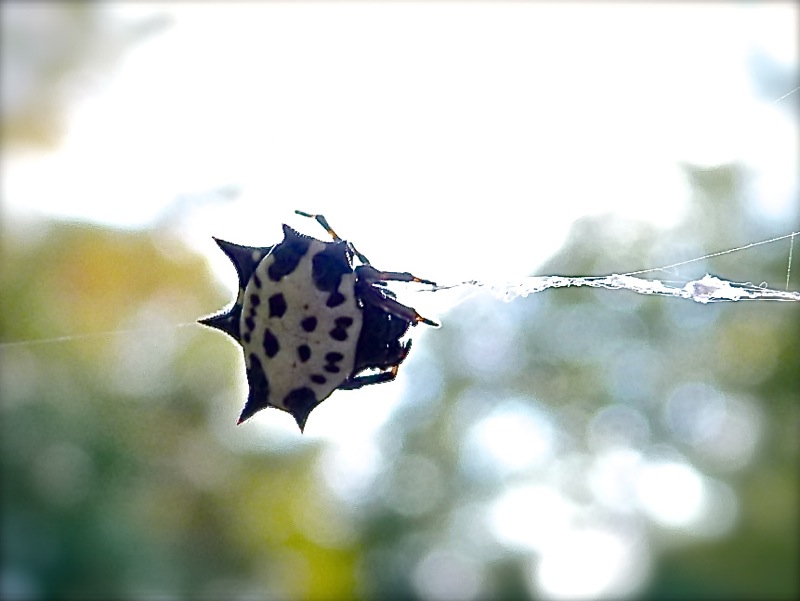My Little Orb Weaver
 Saturday, September 21, 2013 at 3:07PM
Saturday, September 21, 2013 at 3:07PM I was outside and walked into a spider web the other day. I turned around and managed to get the web wrapped across my mouth and draped through my hair. I spit and frantically batted at it, imagining the spider heading right into some facial orifice. Somehow I was able to extricate myself, and I fortunately never saw the spider. Poor spider. She was probably more distressed than I was.
Have you noticed how many more spider webs there are in the fall? That's because immature spiders usually come out of their egg sacks in the spring, then take most of the summer to grow up. When they mature, they concentrate on reproducing. Females need lots of energy to produce eggs, so they eat a lot. Thus, lots of spider webs to catch their food. While male spiders will spin webs to catch prey when they are young, upon maturity they usually abandon the practice to concentrate on mating.
I was fortunate to see the next spider web before I walked into it. It seemed to be a large web for such a small spider. I think the spider was just getting started:
Here is a close-up of the spider. She is very interesting!
I looked up my spider on line and easily identified it as a spiny-back orb weaver, Gasteracantha cancriformis. These distinctive crab-shaped spiders have spines along their sides. They have color variations of red, white, yellow and black, depending on their region. They are very small. The male is only up to 1/18 inch, while the female is larger at about 3/8 inch. They are short-lived spiders, living from 2 to 5 months. The male dies only 8 days after mating and the female dies soon after laying her eggs.
These orb weavers are garden spiders. They do not invade the house, and they are not dangerous. They are good guys, preying on flies, mosquitos, beetles, and many flying insects that are harmful to crops and ornamental plants in our gardens. They are susceptible to insecticides, so use of artificial pesticides should be minimized.
There are many species of orb weavers across the world. The famous little spider in Charlotte's Web, by E. B. White, was a kind of orb weaver. Next time I see a spider web in my garden, I will think twice about knocking it down!
 Permalink
Permalink 